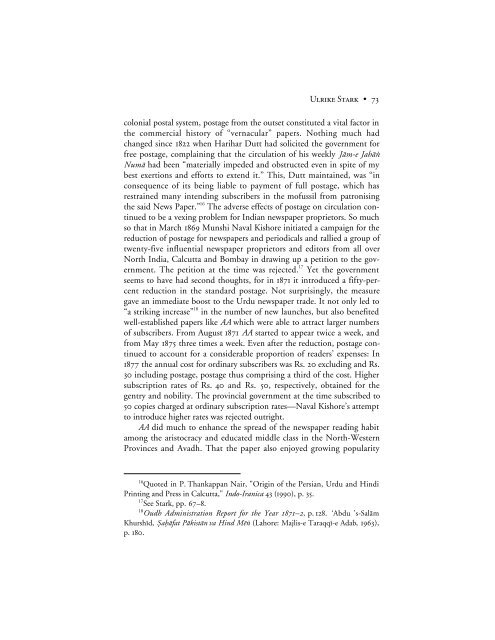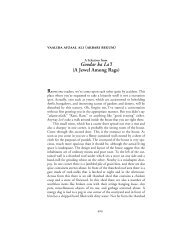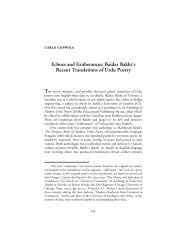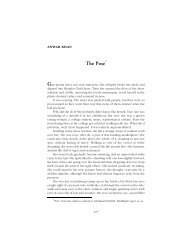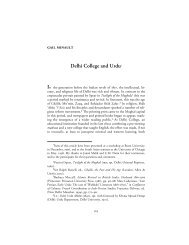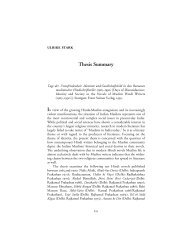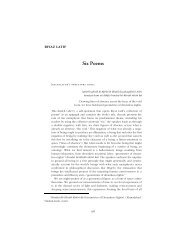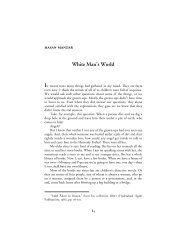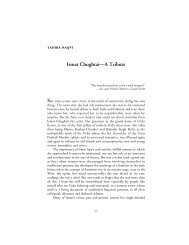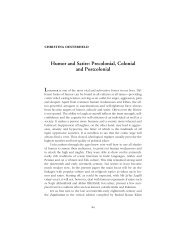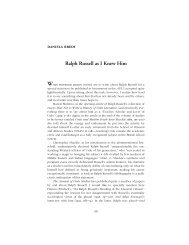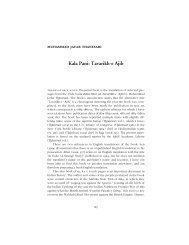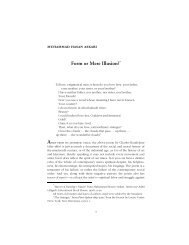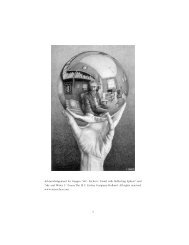Politics, Public Issues and the Promotion of Urdu Literature: Avadh ...
Politics, Public Issues and the Promotion of Urdu Literature: Avadh ...
Politics, Public Issues and the Promotion of Urdu Literature: Avadh ...
Create successful ePaper yourself
Turn your PDF publications into a flip-book with our unique Google optimized e-Paper software.
ULRIKE STARK • 73colonial postal system, postage from <strong>the</strong> outset constituted a vital factor in<strong>the</strong> commercial history <strong>of</strong> “vernacular” papers. Nothing much hadchanged since 1822 when Harihar Dutt had solicited <strong>the</strong> government forfree postage, complaining that <strong>the</strong> circulation <strong>of</strong> his weekly J≥m-e Jah≥Num≥ had been “materially impeded <strong>and</strong> obstructed even in spite <strong>of</strong> mybest exertions <strong>and</strong> efforts to extend it.” This, Dutt maintained, was “inconsequence <strong>of</strong> its being liable to payment <strong>of</strong> full postage, which hasrestrained many intending subscribers in <strong>the</strong> m<strong>of</strong>ussil from patronising<strong>the</strong> said News Paper.” 16 The adverse effects <strong>of</strong> postage on circulation continuedto be a vexing problem for Indian newspaper proprietors. So muchso that in March 1869 Munshi Naval Kishore initiated a campaign for <strong>the</strong>reduction <strong>of</strong> postage for newspapers <strong>and</strong> periodicals <strong>and</strong> rallied a group <strong>of</strong>twenty-five influential newspaper proprietors <strong>and</strong> editors from all overNorth India, Calcutta <strong>and</strong> Bombay in drawing up a petition to <strong>the</strong> government.The petition at <strong>the</strong> time was rejected. 17 Yet <strong>the</strong> governmentseems to have had second thoughts, for in 1871 it introduced a fifty-percentreduction in <strong>the</strong> st<strong>and</strong>ard postage. Not surprisingly, <strong>the</strong> measuregave an immediate boost to <strong>the</strong> <strong>Urdu</strong> newspaper trade. It not only led to“a striking increase” 18 in <strong>the</strong> number <strong>of</strong> new launches, but also benefitedwell-established papers like AA which were able to attract larger numbers<strong>of</strong> subscribers. From August 1871 AA started to appear twice a week, <strong>and</strong>from May 1875 three times a week. Even after <strong>the</strong> reduction, postage continuedto account for a considerable proportion <strong>of</strong> readers’ expenses: In1877 <strong>the</strong> annual cost for ordinary subscribers was Rs. 20 excluding <strong>and</strong> Rs.30 including postage, postage thus comprising a third <strong>of</strong> <strong>the</strong> cost. Highersubscription rates <strong>of</strong> Rs. 40 <strong>and</strong> Rs. 50, respectively, obtained for <strong>the</strong>gentry <strong>and</strong> nobility. The provincial government at <strong>the</strong> time subscribed to50 copies charged at ordinary subscription rates—Naval Kishore’s attemptto introduce higher rates was rejected outright.AA did much to enhance <strong>the</strong> spread <strong>of</strong> <strong>the</strong> newspaper reading habitamong <strong>the</strong> aristocracy <strong>and</strong> educated middle class in <strong>the</strong> North-WesternProvinces <strong>and</strong> <strong>Avadh</strong>. That <strong>the</strong> paper also enjoyed growing popularity16 Quoted in P. Thankappan Nair, "Origin <strong>of</strong> <strong>the</strong> Persian, <strong>Urdu</strong> <strong>and</strong> HindiPrinting <strong>and</strong> Press in Calcutta," Indo-Iranica 43 (1990), p. 35.17 See Stark, pp. 67–8.18 Oudh Administration Report for <strong>the</strong> Year 1871–2, p. 128. ‘Abdu ’s-Sal≥mKhurshµd, ¿a√≥fat P≥kist≥n va Hind M® (Lahore: Majlis-e Taraqqµ-e Adab, 1963),p. 180.


